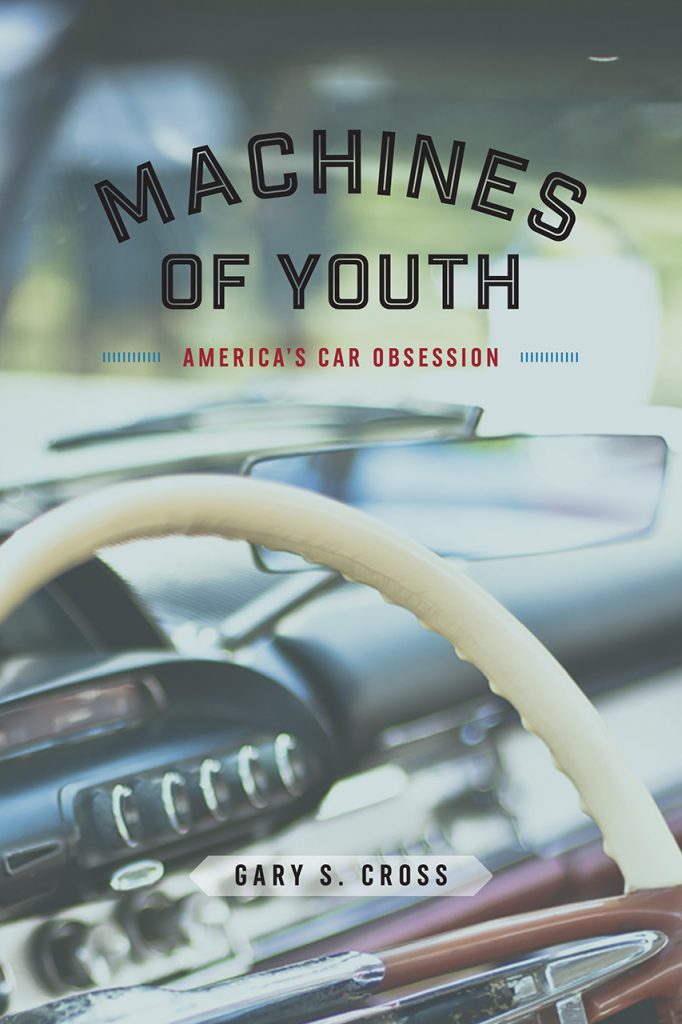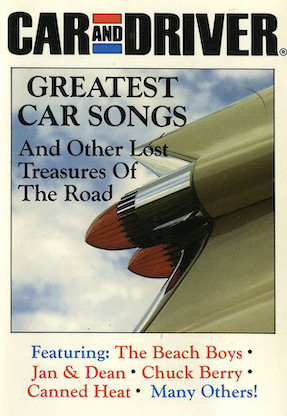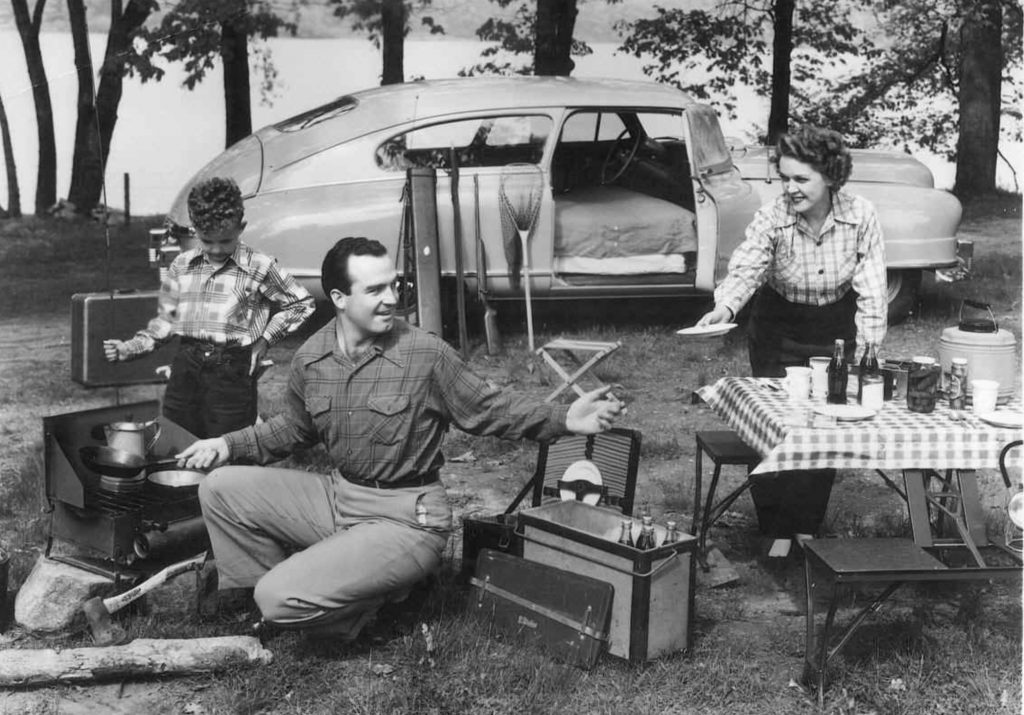
As a scholar, albeit of the independent variety, I am sometimes asked to contribute to research in various ways. A little over a year ago The Journal of the History of Childhood and Youth asked if I would write a book review on a car-and-youth related publication for an upcoming issue. As I am always open to a new opportunity, I gladly accepted, particularly since I had already purchased the book and was planning on reading it anyway. The review was recently published in the JHCY Winter 2020 issue. Machines of Youth: America’s Car Obsession by historian Gary Cross is an interesting and in-depth look at the various American youth car cultures of the 20th century. For those who may be curious about the book, I have included my review here.
Machines of Youth: America’s Car Obsession
By Gary S. Cross
Chicago: University of Chicago Press, 2018. 227 pp. Paper $32.50, cloth $97.50.
Machines of Youth is a colorful chronology of American youth car cultures from the early automotive age to the present day. Relying on an eclectic assemblage of sources – interviews, print media, automotive publications, popular culture, and personal anecdotes – historian Gary Cross has constructed a compelling examination of a rarely researched subject and subculture. Although the book stands on its own as an in-depth exploration of young men’s involvement and fascination with cars over the past century, it also serves as a rarely examined but timely analysis of white working-class youth culture in twentieth-century America. In Machines of Youth, Cross takes us beyond the scope of traditional automotive histories to investigate the teenage cultures that evolved along its margins. To young working-class men, Cross argues, car culture was not only a community in which automotive craftsmanship and knowledge could be developed and shared, but also served as an important source of masculinity, autonomy, individualism, self-expression, and rebellion.
Cross skillfully intertwines automobile history with the teenage cultures it generated. Each chapter introduces cars of a particular generation and the young men who became engaged, if not obsessed, with the growing automotive phenomenon. Some of the stops along the way include the early auto age and young men’s growing preoccupation with the gasoline-powered automobile, the 1930s customizing and “souping up” craze, the 1940s hot rod wars, the 1950s and 60s cruising and parking culture, and the Fast and Furious era of Japanese “rice burners”. Cross also makes an intriguing detour into the familial and community Latino car culture of “low and slow”. At each juncture Cross delves into how a particular culture came to be, considers how and why boys became involved, investigates the influence of club life and the media, considers how the subcultures were regarded by the public, and discusses the efforts made to suppress, disregard, or encourage young men’s automotive activities. Cross concludes the book by considering the state of car culture today, the role of nostalgia in its maintenance, as well as whether there remains enough automotive interest for its continuance into the future.
Although car cultures attracted teens from all walks of life – e.g. baby boomer muscle car enthusiasts and middle-class hippies who tinkered with aging VW Beetles – Cross is particularly interested in the role the automobile played in the lives of white working-class youth. In the chapter devoted to “greasers and their rods,” Cross examines how cars gave these “marginal” high school boys an opportunity to define themselves apart from the mainstream white middle-class population. As the author notes, while middle-class teens on the “college prep” track were likely to drive cars owned or purchased by their parents, working-class youth in the vocational curriculum took pride in working on their own jalopies. Thus, as Cross writes, “the customized car offered a token of dignity to a group that had always been subordinate, but which in the mid-twentieth century was steadily losing ground” (99). Cross’s examination of white working-class youth is particularly timely given the current political climate, which has witnessed a growing sentiment of discontent and disaffection among rural white working-class men.
Machines of Youth is a welcome and important addition to existing automotive scholarship. Although much has been written on the history of the automobile, only a handful of scholars (e.g. Karen Lumsden, Amy Best, Brenda Bright, Sarah Redshaw) have investigated specific car cultures. And while Cross presents an engaging examination of the history of young men’s involvement with cars, the volume’s strength comes from its unique focus on class (in addition to gender and race) as an influential and crucial component of American youth car cultures. What the book lacks, however, is diversity in research location. Although the west coast was certainly an important breeding ground for youth car cultures, there is a little too much emphasis on the California car scene. While other locations are mentioned, the tone of the book suggests the majority of youth automotive activity occurred in the Golden State. Cross also fails to lay out his methodology in the introductory section. Consequently, it is up to the reader to piece the research sources together chapter by chapter.
Machines of Youth is certain to be embraced by aging men of a particular generation who grew up with a passion for cars and see themselves in its pages. For auto historians, Cross’s astute analysis of young men’s engagement with the automobile provides a social context to the ebb and flow of automotive popularity over the past century. However, scholars of youth cultures will find Cross’s work fascinating whether or not they have an interest in cars. The focus on white working-class teens is not only engrossing and enlightening in its own right, but has particular relevance during this disquieting time in our nation’s political history.
Do you have a favorite car book? What makes an automotive book worth reading? Your suggestions are welcome!

